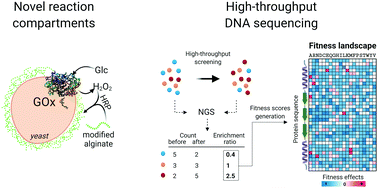High-throughput screening, next generation sequencing and machine learning: advanced methods in enzyme engineering
Abstract
Enzyme engineering is an important biotechnological process capable of generating tailored biocatalysts for applications in industrial chemical conversion and biopharma. Typical enhancements sought in enzyme engineering and in vitro evolution campaigns include improved folding stability, catalytic activity, and/or substrate specificity. Despite significant progress in recent years in the areas of high-throughput screening and DNA sequencing, our ability to explore the vast space of functional enzyme sequences remains severely limited. Here, we review the currently available suite of modern methods for enzyme engineering, with a focus on novel readout systems based on enzyme cascades, and new approaches to reaction compartmentalization including single-cell hydrogel encapsulation techniques to achieve a genotype–phenotype link. We further summarize systematic scanning mutagenesis approaches and their merger with deep mutational scanning and massively parallel next-generation DNA sequencing technologies to generate mutability landscapes. Finally, we discuss the implementation of machine learning models for computational prediction of enzyme phenotypic fitness from sequence. This broad overview of current state-of-the-art approaches for enzyme engineering and evolution will aid newcomers and experienced researchers alike in identifying the important challenges that should be addressed to move the field forward.

- This article is part of the themed collection: Machine Learning and Artificial Intelligence: A cross-journal collection


 Please wait while we load your content...
Please wait while we load your content...